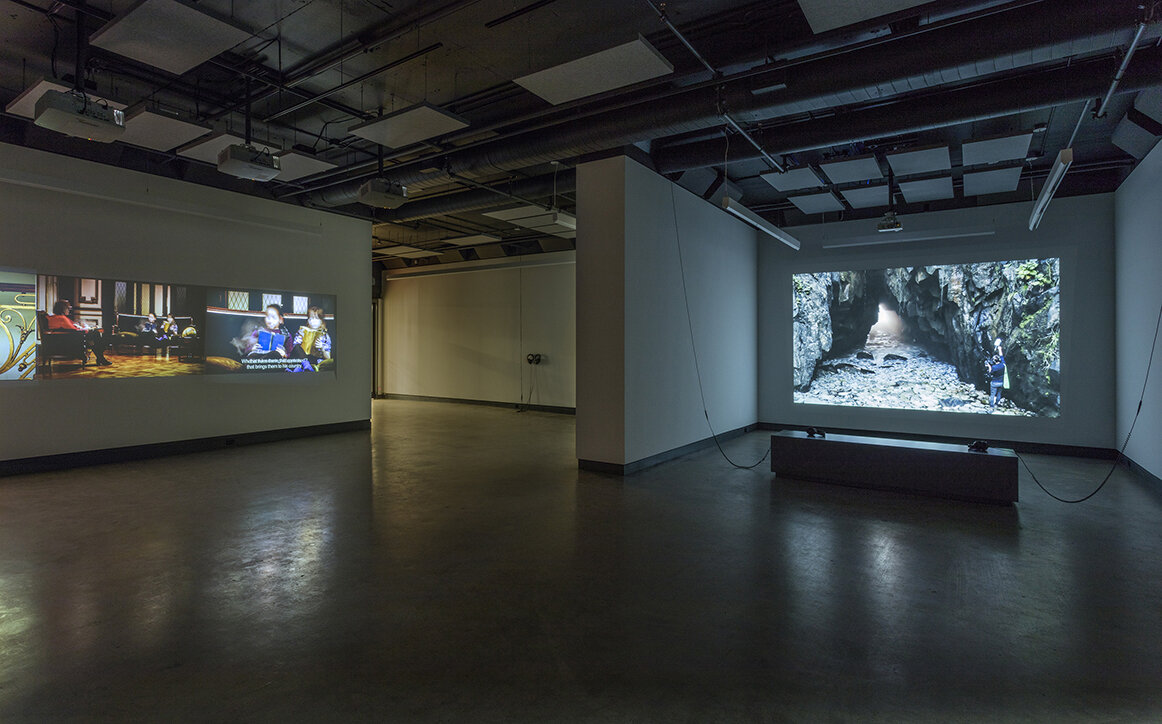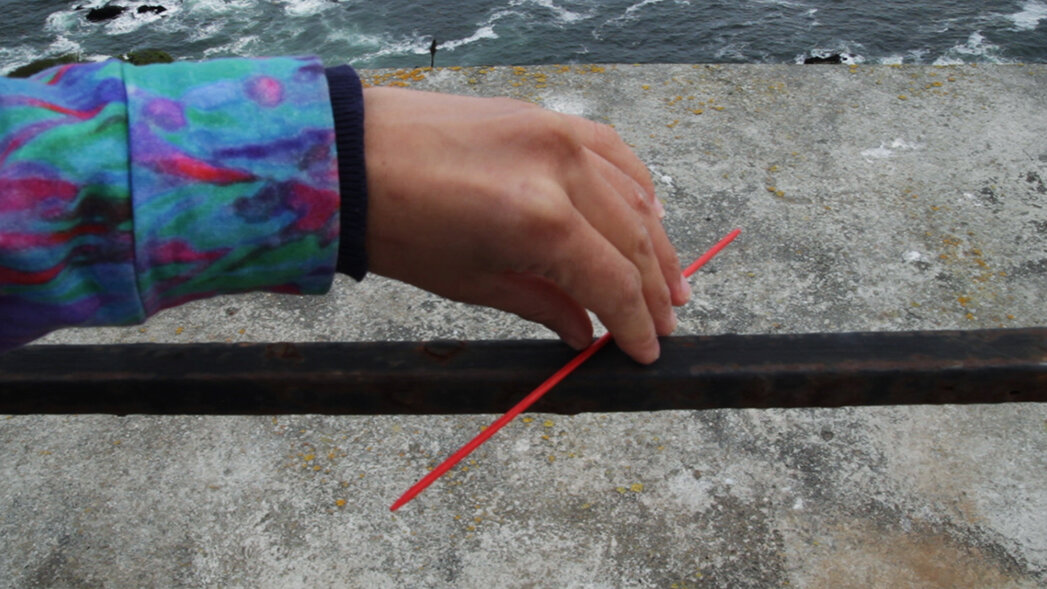




Where does sound go, where does it come from is a video and sound installation that explores the distance and tension inherent in the intersection of sound and sight, of seeing what cannot be seen and only heard.
The installation flips back and forth between seeing/hearing and listening/visualizing, relying on the white noise of the ocean as an auditory space for narratives of individual and collective imagination to emerge. While in Coliumo Bay, Chile, investigating different modes of orientation by local fishermen, I discovered that they were able to navigate the treacherous, dark and foggy conditions of the Pacific coast by relying on sound. In order to explore these findings, a series of interviews were organized where field recordings of the shore were presented to participants. The local fisherman were able to precisely geo-locate specific bays, shores, and peninsulas by listening to the echo of the waves against the rocks.
L’installation vidéo Where does sound go, where does it come from (« où va le son, d’où vient-il ») explore la frontière – voire le point de tension – entre le son et la vision, entre ce qui est vu et ce qui ne peut être vu, mais seulement entendu. Cette installation alterne entre voir/entendre et écouter/visualiser, en s’appuyant sur le bruit blanc de l’océan comme un espace auditif d’où émergent des récits appartenant tantôt à l’imaginaire individuel tantôt à l’imaginaire collectif.
Sandra Volny would like to thank the Canada Council for the Arts, Casa Poli, Triangular Project. Director, Editor: Sandra Volny/ Interview’s camera and sound recordings: Simon Bélair, Florine Leoni, Sandra Volny/ Landscape camera and soundscape recordings: Sandra Volny/ 3D sound editing: Greg Debicki/ Color correction: Joshua Sherrett/ Sound mix: Pascal Desjardins, Studios Appolo.
